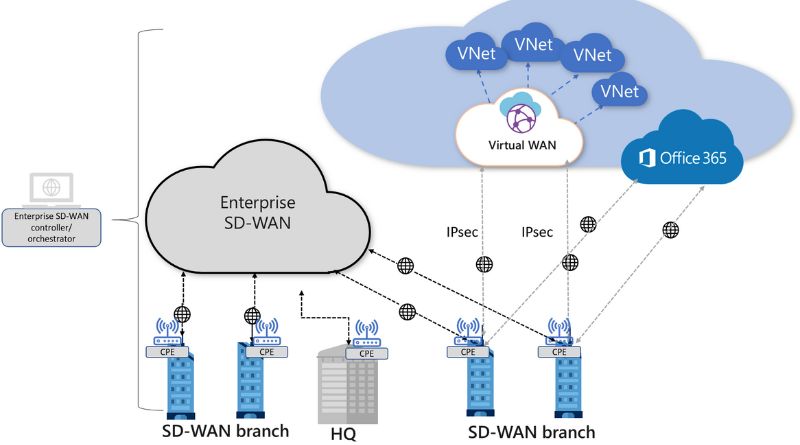4 Tips for Crafting an SD-WAN Implementation Checklist
A vital SD-WAN implementation checklist should cover your goals, needs, and challenges. It should also be tailored to your business requirements and your evaluation of SD-WAN solutions.
Security should be a top priority when you are choosing an SD-WAN solution. Look for a provider with robust vulnerability scanning and a rigorous patching schedule Sw418 live.
Know Your Goals
Before embarking on an SD-WAN implementation, it’s essential to have a clear idea of what goals you want to achieve. Knowing this helps you determine what steps to take and which vendors to work with.
One standard mistake organizations make deploying an SD-WAN without a clear understanding of how to achieve the desired outcomes. To avoid this issue, leaders should begin by educating their team on the technology and its role within the network infrastructure.
Identify Your Needs
Identifying your needs will help you craft an SD Wan implementation checklist that best fits your network. It also enables you to ensure you get a comprehensive solution that meets your business goals.
A business-driven SD-WAN intelligently monitors and manages all underlay transport services, delivering the highest levels of application performance and quality of experience (QoEx) to users.
It would be best to ask your potential SD-WAN vendor how it proactively steers traffic to the best available connection in real-time on a case-by-case basis. The more advanced solutions automatically redirect traffic to a different link if it becomes unavailable or underperforming.
Identify Your Challenges
Before committing to an SD-WAN deployment, organizations need to identify their challenges. It can be done through a needs assessment.
The common areas needing improvement are proprietary backhaul connectivity services, poor network performance, inconsistent security posture, and policy management.
Regarding the WAN, these problems can lead to costly outages and unpredictable service disruptions, impacting critical business operations. To mitigate these risks, IT teams must invest in a secure SD-WAN architecture that delivers end-to-end security through a single platform designed to adapt to changing business and connectivity needs.
Identifying your challenges before beginning SD-WAN implementation is critical to a successful deployment. It will help you determine what technology you need to achieve your goals and give you better leadership support.
A common challenge IT teams face is vendor selection. Vendors offer multiple solutions that vary in complexity and ease of use.
In addition, IT teams may need help with deploying the SD-WAN hardware required to connect remote sites. Deploying this hardware can be costly and complicated, mainly if the site is in a remote location such as an oil rig or weather station.
IT teams must identify their challenges to create a practical SD-WAN implementation checklist. It will help them realize a better user experience, reduce costs and complexity, and confidently scale their businesses.
Among the key challenges are vendor selection, underlay provisioning, and cloud connectivity. By addressing these issues, IT teams can ensure their customers can leverage SD-WAN to its full potential and deliver the desired ROI.
Conduct a Needs Assessment
Before you can start evaluating SD-WAN solutions, it is essential to identify your specific challenges. It will help you select the solution that meets your needs and budget.
A key consideration is bandwidth steering. This capability enables you to steer traffic across your WAN links based on performance metrics.
Needs assessments are practical tools that help shed light on various issues. They can be used across multiple settings, such as schools, hospitals, and states, to determine programmatic actions that will improve the lives of individuals and communities.
Needs assessments often involve sending surveys and conducting focus groups to obtain feedback from key stakeholders. These can be a great way to gather the necessary data to craft a practical SD-WAN implementation checklist.
Needs assessments are a systematic process for identifying strengths, weaknesses, and priorities. They provide essential data that helps teams create more effective systems.
A needs assessment can be conducted using various methods, including surveys and interviews. Gathering as much information as possible is critical, especially from the people closest to your business processes.
It will ensure that your report is comprehensive and help you identify gaps in your current system. Once you’ve identified the holes, you can develop a plan to fill them.
A needs assessment allows the vendor to identify a company’s network weak points, bottlenecks, and root causes of issues. The vendor can then propose a plan to fix these problems so the SD-WAN solution will perform as expected once deployed.
A good vendor will also conduct an application analysis to understand how current workloads function and transact across the business environment. It helps IT and business teams to allocate resources effectively.
An SD-WAN creates a secure, virtual overlay over multiple network services, such as the public Internet and MPLS. This overlay automatically selects the best path to optimize traffic for performance, resiliency, and security.
Conducting a needs assessment is one of the best ways to ensure your SD-WAN implementation is successful. This process will help you identify gaps in your current processes and guide you in improving them.
Needs assessments can be conducted in many ways, including one-on-one interviews, surveys, and focus groups. You’ll want to choose the best method for your company’s needs and goals the techno tricks.




